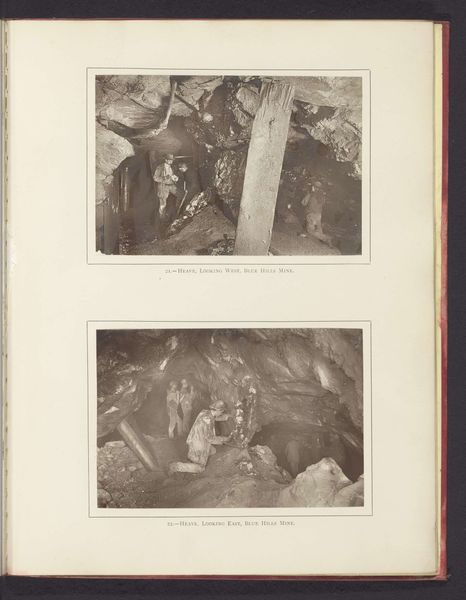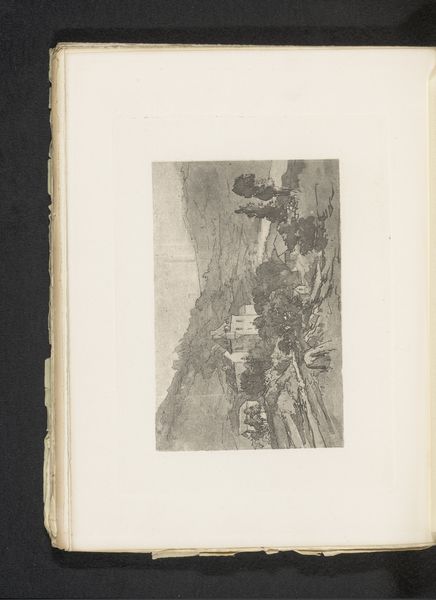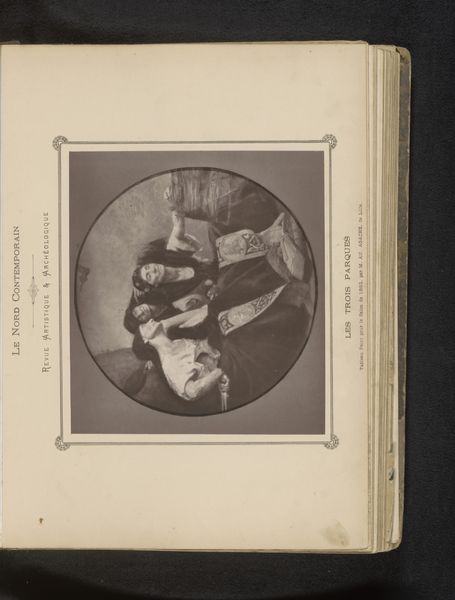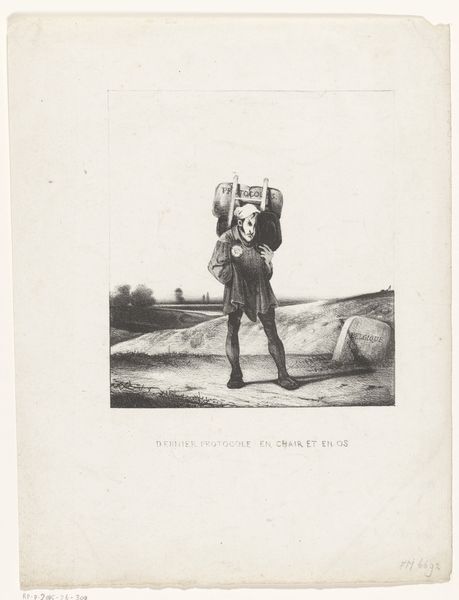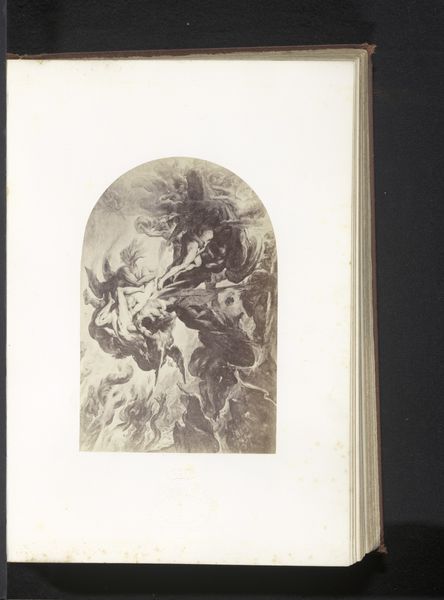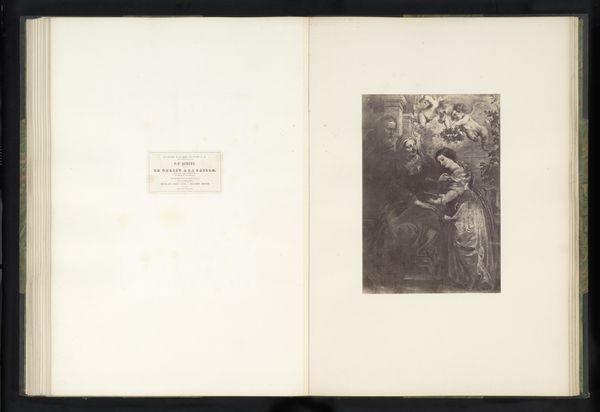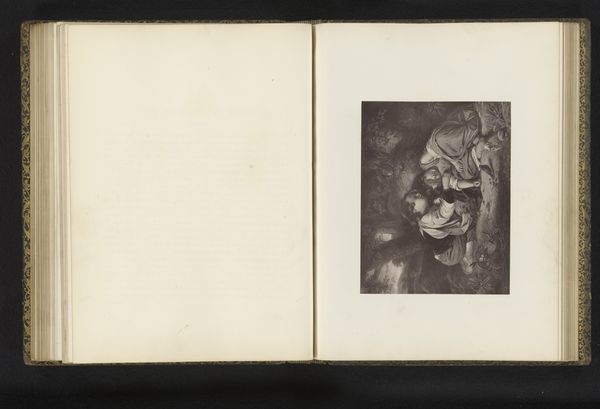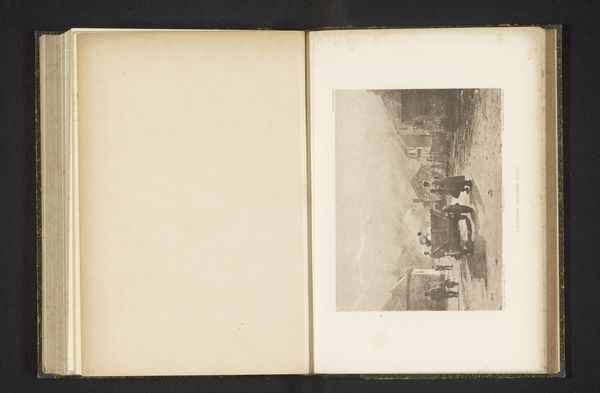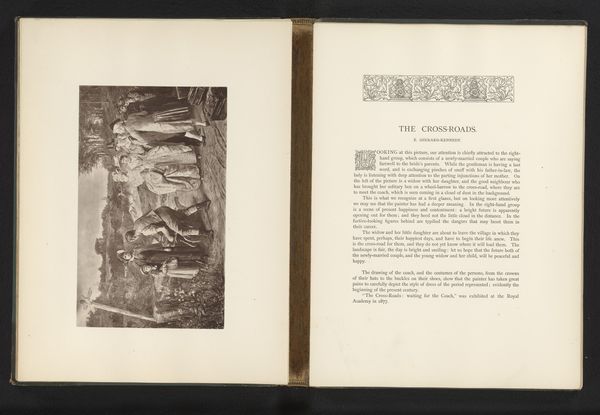
print, etching, engraving
# print
#
etching
#
coloured pencil
#
history-painting
#
academic-art
#
engraving
#
watercolor
#
realism
Dimensions: height 256 mm, width 145 mm
Copyright: Rijks Museum: Open Domain
Curator: Let's examine "Reproductie van Fugutifs", an engraving made before 1876 after Pierre-Paul-Léon Glaize. It shows several figures suspended on ropes scaling a fortress-like wall. Quite dramatic! Editor: Indeed! My first impression is one of precariousness and struggle. You can almost feel the strain in the bodies and the rough texture of the wall against their skin. The high contrast of light and shadow adds to the tension, doesn’t it? Curator: It does. The historical context here is important. Glaize was known for his history paintings. This work speaks to anxieties about siege warfare prevalent in the 19th century. Think of the socio-political turmoil of the time, the shifting power dynamics across Europe, which fuelled fear. The ropes become symbolic of fragile lifelines, the perilous conditions of the fugitives reflecting the fears of a populace. Editor: That fragility you mention extends to the materiality too. The starkness of the etching and engraving creates a very distinct sense of texture – we are aware of the marks, the cuts in the plate, the very hands involved in producing this reproduction, not just of the depicted figures’ struggle, but the artist's physical labour and its circulation through prints and perhaps later, photography. What about the source painting's role in academic circles at the time? Was Glaize attempting to legitimize history paintings in a shifting art market? Curator: Exactly! History paintings were crucial for artists aiming to exhibit at the Salon and attain social recognition. Reproductions, such as this engraving, helped circulate Glaize’s vision and solidified his place within the artistic hierarchy. It also allowed the general public, who couldn’t necessarily afford the original artwork, to experience these grandiose historical narratives at home. Editor: So, in a way, this image becomes a commodity in itself. Through circulation in printmaking, it reinforces academic art standards whilst engaging broader audiences and democratising the ownership of Art. Curator: Precisely. Looking closely, it’s also fascinating how the artist uses light and shadow. Observe how the figures are bathed in a dramatic light, accentuating their desperation. Editor: Well, it also creates a stunning visual dynamic. This exploration of light, texture, process and historical setting encourages us to understand "Fugutifs" not just as a story but also as a fascinating example of print production in 19th-century France. Curator: A view I concur. Examining the painting this way indeed enables a richer understanding, layering process, politics, and human element together.
Comments
No comments
Be the first to comment and join the conversation on the ultimate creative platform.
